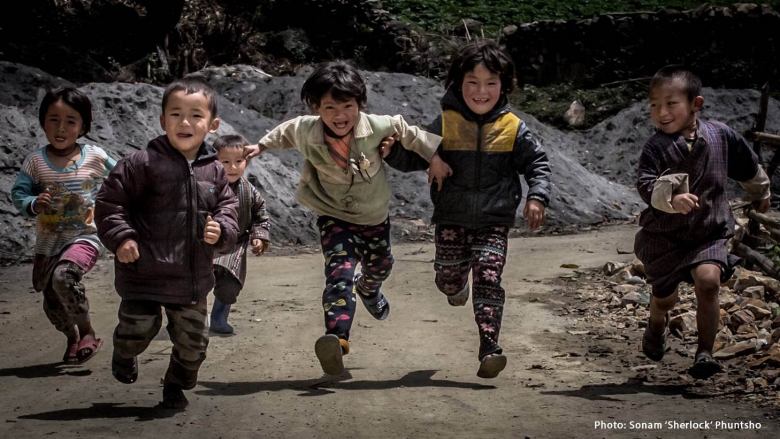Challenge
The public sector, including significant investment in hydropower, has been the main driver of the country’s development accomplishments. Private sector remains weak to create quality jobs for youth. As a result, while the overall unemployment rate was 2.1 percent in 2016, the youth unemployment rate reached 13.2 percent. Rapid development has led to urbanization (about 40 percent of the population now lives in the urban areas), which puts pressure on urban infrastructure such as housing, water and sanitation.
Approach
Its Country Partnership Strategy (FY2015-2019) (CPS) and Performance and Learning Review (PLR) in 2017 are aligned fully with Bhutan’s 11th five-year plan for 2013-2018. The CPS focuses on (a) improving fiscal and spending efficiency; (b) increasing private-sector growth and competitiveness; and (c) supporting green development. Programmatic development policy credit (DPC), combined with relevant analytical work and technical assistance, was effective in supporting government policy reforms. DPCs enabled the World Bank Group to better respond to the government’s demands to support key policy reforms to address the structural constraints in public finance and private sector development. DPCs have provided a platform for bringing together analytical work, technical assistance and policy dialogue. The investment projects have also helped support key physical and social infrastructures in the most remote communities as well as in the most booming urban towns. These IDA operations have also contributed to strengthening government capacity. Furthermore, the IDA operations have provided an important platform for the World Bank Group to collaborate across Global Practices as well as between the World Bank and IFC.
Results
On fiscal management and domestic revenue mobilization, the government approved a debt policy that set debt limits to improve fiscal sustainability in 2016. To this effect, the non-hydropower debt (% of GDP) declined to 19% in 2017/18 from 27% in 2014/15, below the target at 25% in the debt policy. Also, parliament approved the establishment of a stabilization fund in 2017 to manage future inflows of hydropower revenues. Furthermore, the cabinet approved the introduction of Goods and Services Tax (GST) in 2017. Once the GST bill is approved by parliament within a few years, the collection of GST is likely to contribute significantly to domestic revenues to invest in Bhutan’s people.
Access to finance remains one of the key constraints to private sector development. Therefore, on private sector development, the government approved the Financial Sector Development Action Plan in 2016. Ever since, the number of micro, small and medium enterprises loans in the collateral registry have significantly increased (348 in 2014 to 2,508 in 2017) and the percentage of people with bank accounts have increased to 65% in 2017 from 34% in 2014. Also, the establishment of an online property and land registration system in Thimphu, the capital city, in 2016 is expected to improve the investment climate.


